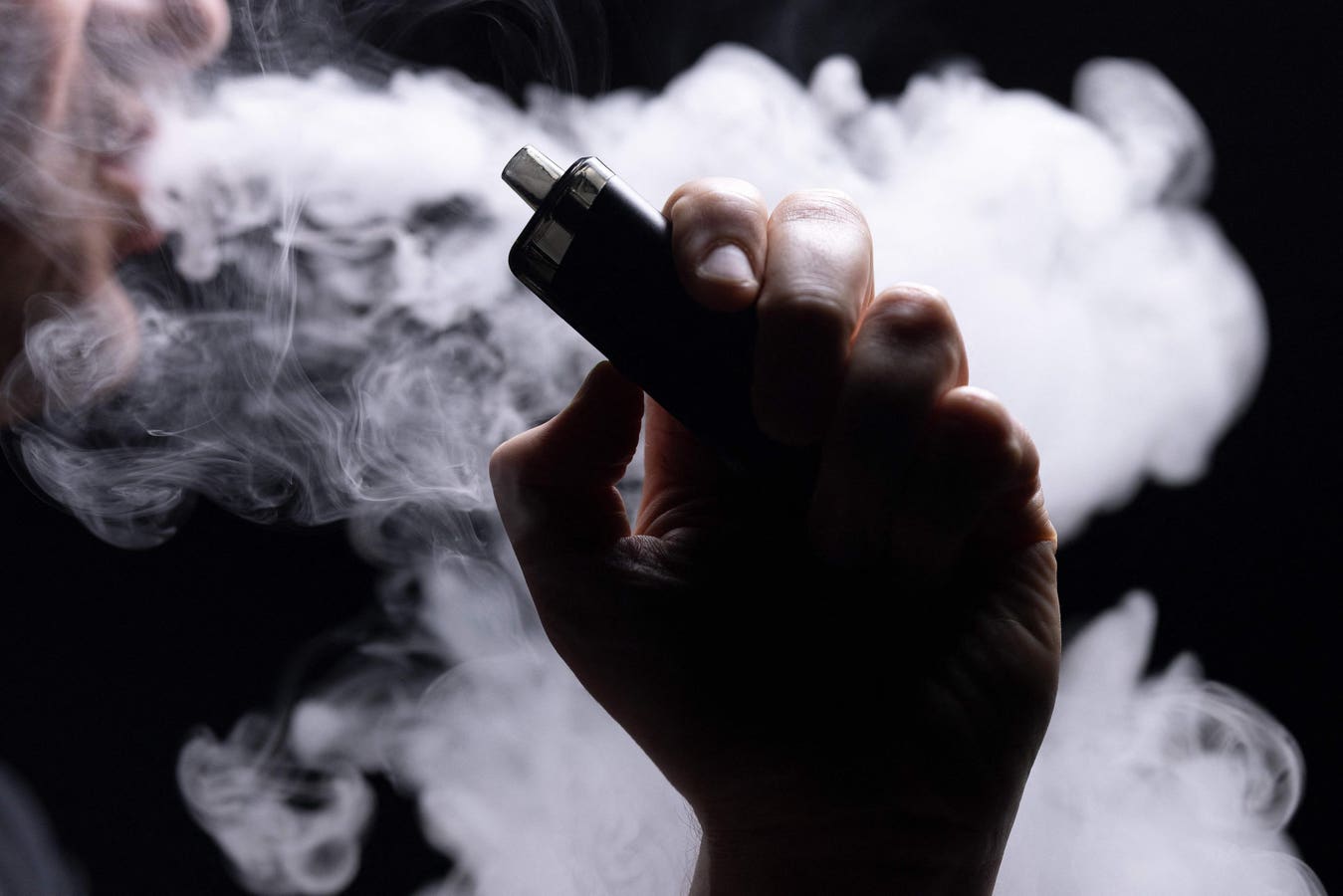TOPSHOT – This photograph taken on May 30, 2023 show an individual vaping an electronic cigarette in Paris. (Photo by JOEL SAGET / AFP) (Photo by JOEL SAGET/AFP via Getty Images)
AFP via Getty Images
E-cigarette sales rose 49% between 2019-2023, according to a report from the CDC Foundation and Truth Initiative. Although the use of e-cigarettes in youth has declined, more than 1.6 million youth still report using e-cigarettes, and nearly 90% of these youth report using one of the many flavored varieties.
Vaping is different than smoking cigarettes, since it involves heating a liquid in a small device like a vape or e-cigarette that is then inhaled in the lungs. Smoking cigarettes, on the other hand, involves burning tobacco.
So is vaping safer and less harmful than smoking tobacco? Regular tobacco cigarettes contain 7,000 chemicals, many of which are harmful and toxic to the body. Although the exact chemicals that are in vaping are not completely known at this time, most experts agree that vaping exposes you to less chemicals than are found in traditional cigarettes.
That does not mean vaping is safe or even less harmful than smoking cigarettes. In fact, the e-cigarettes currently in the market within the U.S. have not undergone a systematic FDA review with respect to safety and effect on health. In addition, the majority of vape products contain nicotine, the highly addictive substance also found in tobacco cigarettes that is known to be harmful to health.
Nicotine is known to damage blood vessels making them narrower, which ultimately can lead to high blood pressure and the development of heart attacks and strokes. The substance also damages airways and predisposes individuals to develop many chronic lung diseases including asthma and chronic obstructive lung disease. Nicotine can also profoundly affect brain development which continues until the age of 25. Using it during adolescence can harm the parts of the brain that control attention, mood, learning and impulse control, according to the CDC.
Even if vaping products don’t contain nicotine, they are still harmful to health. They contain many other highly toxic products and chemicals that can seriously compromise your health. Some chemicals produced by e-cigarettes include formaldehyde and acetaldehyde, which are known to cause both lung and heart disease. In addition, many e-cigarettes contain acrolein, which is a herbicide used to kill weeds and is linked to the development of lung cancer. All of these toxic chemicals are being inhaled into the body when individuals vape.
These are just some of the many harmful chemicals and toxins that are present in vape products. There are many more, including chemicals like nickel and lead.
E-cigarettes are also the most popular method used for smoking cessation, and it is perceived socially to help people kick the habit of smoking. Vaping is not a FDA approved method for quitting smoking, and research shows that using e-cigarettes has not been proven as an effective method for individuals to quit smoking. FDA approved methods to help quit smoking cigarettes include nicotine patches, gum and prescription medications.
An additional concern about vaping is the emergence of a new generation that has become addicted to nicotine without the use of cigarettes. More than 1.6 million youth in America are vaping, and the majority have never smoked cigarettes. This is problematic because nicotine is highly addictive and vape products can have much higher levels of nicotine than traditional cigarettes through extra-strength cartridges or higher voltages.
Although much more research is needed to elucidate the health effects of vaping, what we already know is they can be very toxic to one’s health. Vaping has long been socially perceived to be a “better” or less harmful alternative to smoking cigarettes, and that misconception needs to change.









